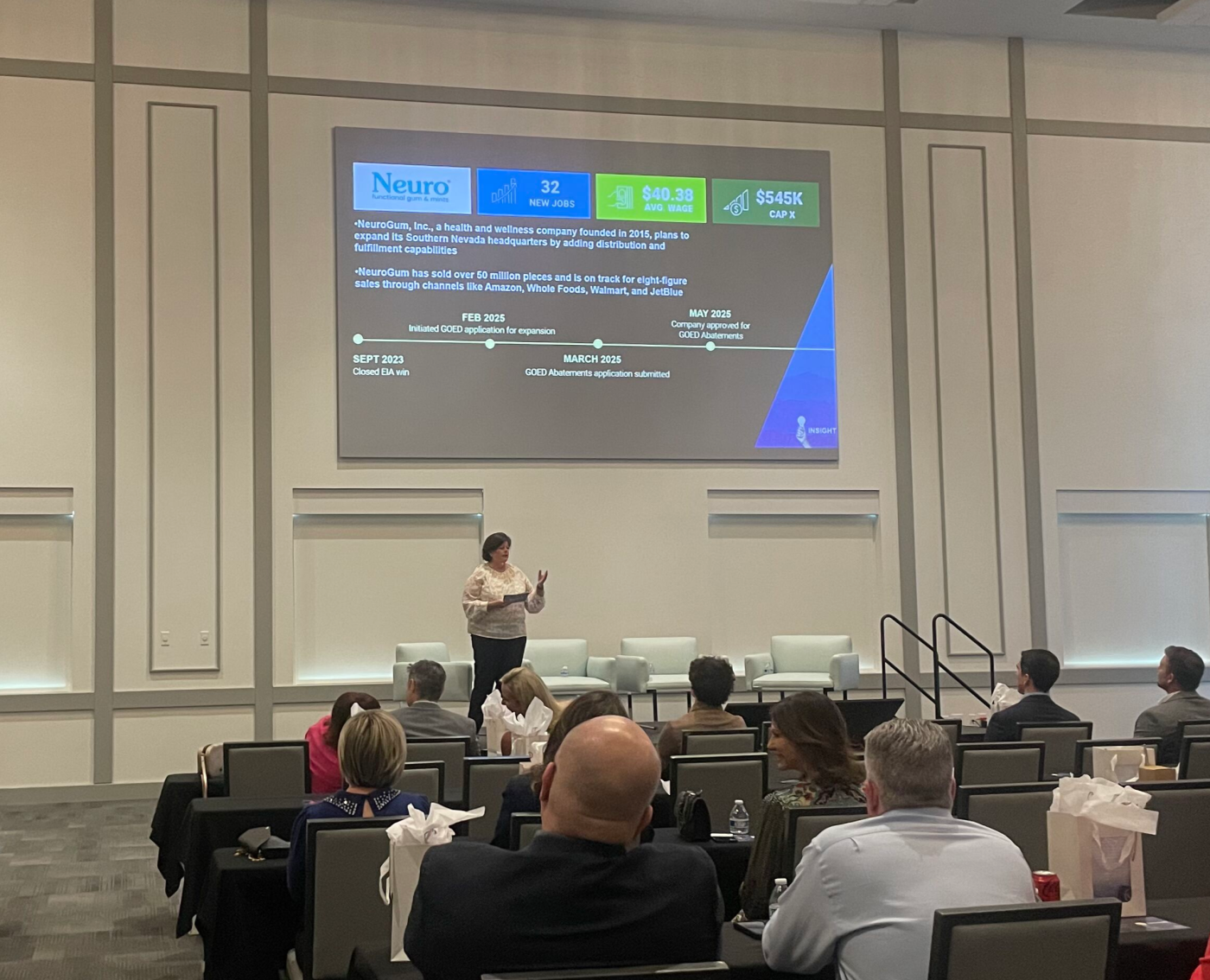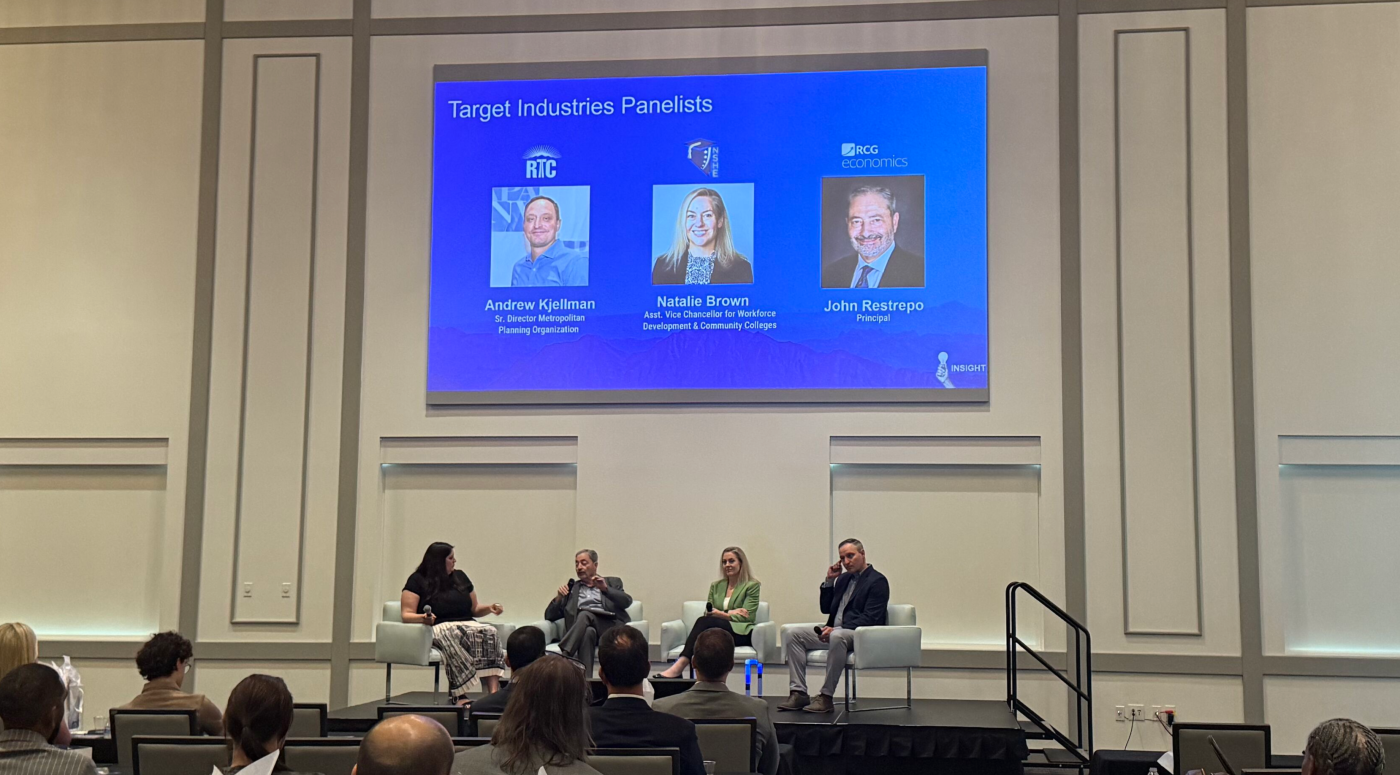Southern Nevada Leaders Emphasize Regional Collaboration in Economic Development Strategy to offer valuable insight into future initiatives.
Last week, Las Vegas Global Economic Alliance (LVGEA) convened a panel of regional experts at its quarterly investor-exclusive INSIGHT event. They discussed the importance of insight into regional collaboration across economic development, workforce, infrastructure, and land use planning. This collaboration is crucial to support emerging industry targets.
“Our region is at a crossroads, and this is our strategic bridging moment,” said Betsy Fretwell, interim CEO of LVGEA. “This is a chance for our region to align purpose with progress. We need to be growing smarter, growing stronger, and growing together.” Offering insight, she emphasized the need for strategic growth.

The discussion, which was hosted at The Viticus Group and sponsored by COX Business and JPMorganChase, was framed around a forthcoming target industry subsectors study. This study aims to help Southern Nevada refine its economic development priorities.
“The study will provide insight and help us really zero down into the industry subsectors that make sense for our region,” said Heather Brown, Senior Vice President of Entrepreneurial Development at LVGEA and the panel moderator. “As we look at what the data tells us, we also need to consider our regional strengths, available infrastructure, and the talent pipeline as we create regional strategies.”
While the study’s final recommendations are still pending, panelist John Restrepo of RCG Economics, the company conducting the study, shared early takeaways.
“My first takeaway is that there is huge growth potential in our local professional services industries,” Restrepo said. “Second, we need to look at the supply chain for businesses already here. We must use our insight to expand local services so they don’t have to get them out-of-market. And finally, we need to take more advantage of our proximity to California, which is currently the world’s fifth largest economy.”

Workforce Readiness
Panelists noted the importance of higher education working in tandem with economic development agencies on creating a region-wide approach to attracting new businesses. The answer to expanding workforce readiness often lies in discerning talent insight.
Natalie Brown, Assistant Vice Chancellor for Workforce Development and Community Colleges at the Nevada System of Higher Education (NSHE), spoke about the need to move quickly in response to employer needs. She also discussed the promising role of short-term, non-degree programs.
“Public higher education isn’t known for our agility,” Assistant Vice Chancellor Brown acknowledged. “But all our institutions can stand up a non-certificate training program within four to six weeks to meet the needs of business and industry.”
She also highlighted a growing focus on credit for prior learning. This grants college credit for knowledge gained through work, military service, or other real-world experiences.
“That’s a way to bring people back into the education system without having to start over,” Assistant Vice Chancellor Brown said.
Moderator Brown, who is also an elected member of the NSHE Board of Regents, agreed. She noted the region has more than 300,000 residents who started a degree but did not finish.
“The way we can get those people interested in renewing their education path is by credit for prior learning,” LVGEA’s Brown said.
Infrastructure Funding
Transportation infrastructure was discussed as a top priority when developing a regional growth strategy.
Andrew Kjellman, Senior Director of the Metropolitan Planning Organization at the Regional Transportation Commission (RTC) of Southern Nevada, warned of challenges tied to both geography and funding. He shared his insight into overcoming such obstacles.
“We currently have an inability to keep up with the pace of development,” Kjellman said. “When we look at our region’s future economic development areas such as Apex or Eldorado Valley, those areas are outside of our current service area. If you’re talking about access, the workforce will be challenged to get to those jobs.”
The RTC is currently updating its Southern Nevada Strong regional plan. Kjellman noted it takes a broader approach than traditional transportation planning.
“It’s not just about land use and roads anymore — this update is looking at access to high-wage jobs, housing attainment, and more transportation choices,” he said.
Kjellman did confirm LVGEA’s target industry study will be incorporated into the updated regional plan.
“We’ll be working with the local economic development agencies to identify where these target industries might be located,” he said. Following this, they can identify infrastructure improvements to support those industries.
A Call for Collaboration
Panelists agreed that meeting the region’s economic goals will require unprecedented collaboration. To push forward, insight from multiple sectors will be necessary.
“We can’t do these great projects alone,” said Assistant Vice Chancellor Brown. “Look at the Debra March Center of Excellence. There were a lot of hands involved in making that happen. It takes government partners, workforce partners, and community partners working together, all providing their own insight.”
As the study nears completion and regional plans continue to evolve, the panelists stressed that now is the time for alignment. This alignment should occur across jurisdictions, agencies, and industries.
LVGEA expects the target industry study to be available this summer.




